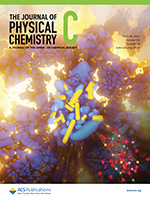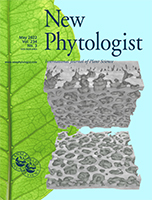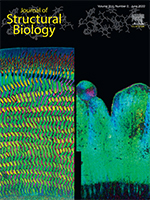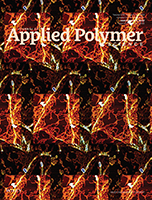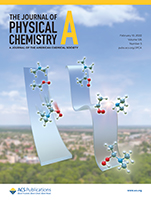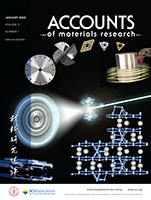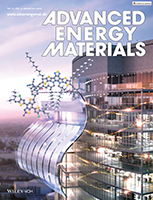An intermediate polymorph of iron oxide, ε-Fe2O3, has attracted significant attention for potential applications in high-frequency mm-wave absorption and high-density magnetic recording. However, fabrication is still a challenge. Here, we identified critical reaction parameters to improve the phase purity and tested their effects. Read more »
Journal Covers
Structural organization of the spongy mesophyll
Many leaves have two layers of photosynthetic tissue: the palisade and spongy mesophyll. The latter is not well characterized and often treated as a random assemblage of irregularly shaped cells. These results show that simple principles may govern the organization and scaling of the spongy mesophyll in many plants and demonstrate the presence of structural patterns associated with leaf function. Read more »
Enhancing the inherent catalytic activity and stability of TiO2 supported Pt single-atoms at CeOx–TiO2 interfaces
Single atoms with atomically coordinated reaction centers are considered next-generation catalysts. However, there is concern about their thermodynamic vulnerabilities and whether their inherent catalytic nature is superior compared with that of larger nanoparticles. Here, we address the two controversies by a comparative study using two catalysts. Read more »
Biomineralization: Integrating mechanism and evolutionary history
In this review, Gilbert et al. develop a model for calcium carbonate biomineralization applicable to all phyla. Their model may help elucidate the key genetic components that drive biomineralization and offers insight into the consequences of global climate change on marine organisms. Read more »
Loss of biological control of enamel mineralization in amelogenin-phosphorylation-deficient mice
Amelogenin phosphorylation plays crucial roles in controlling structural, crystallographic, mechanical, and compositional characteristics of dental enamel. Thus, loss of amelogenin phosphorylation leads to a reduction in the biological control over the enamel mineralization process. Read more »
Programmable stiffness and stress–relaxation of cross-linked self-assembling peptide hydrogels
An AFM image representing a supramolecular hydrogel based on a cross-linked self-assembling peptide (SAP). Cross-linking allows for precise tuning of biomechanical properties, spanning the range of stiffness values found in the human central nervous system, pancreas, liver, lung, and skin tissues. The findings provide a new strategy helpful for soft tissue regeneration. Read more »
Dramatic Conformer-Dependent Reactivity of the Acetaldehyde Oxide Criegee Intermediate with Dimethylamine Via a 1,2-Insertion Mechanism
Acetaldehyde-oxide (CH3CHOO) is an atmospherically pertinent reactive intermediate that exists in syn (right) and anti (left) conformational forms. Experiment and theory reveal that the reaction of anti with dimethylamine is several orders of magnitude faster than that of syn with dimethylamine, despite both reactions being energetically downhill. Read more »
A {Ni12}-Wheel-Based Metal–Organic Framework for Coordinative Binding of Sulphur Dioxide and Nitrogen Dioxide
SO2 and NO2 are important air pollutants, and understanding the mechanism of capture materials drives the development of new clean-up technologies. In situ synchrotron x-ray crystallographic and spectroscopic experiments were used to establish a detailed molecular mechanism consisting of reversible coordination of SO2 and NO2 at the six open NiII sites on the unprecedented {Ni12}-wheel of a robust metal–organic framework material at crystallographic resolution. Read more »
Hardening Effects in Superhard Transition-Metal Borides
Novel superhard materials with exciting potential for applications in cutting tools and abrasives can be designed by combining incompressible transition metals with boron to create phases like WB4, pictured here. Diamond-cell-based high-pressure radial diffraction enables the direct study of lattice specific mechanisms for hardening. Read more »
Synergistic Engineering of Side Chains and Backbone Regioregularity of Polymer Acceptors for High-Performance All-Polymer Solar Cells with 15.1% Efficiency
Researchers developed a series of polymer acceptors with controlled backbone regioregularities and side chain structures. All-polymer solar cells based on a RRg-C20 acceptor which has a regioregular backbone and optimal side chain length achieve a high power conversion efficiency of 15.12%, attributed to high electron mobility and optimal blend morphology. Read more »
- « Previous Page
- 1
- …
- 6
- 7
- 8
- 9
- 10
- …
- 21
- Next Page »
